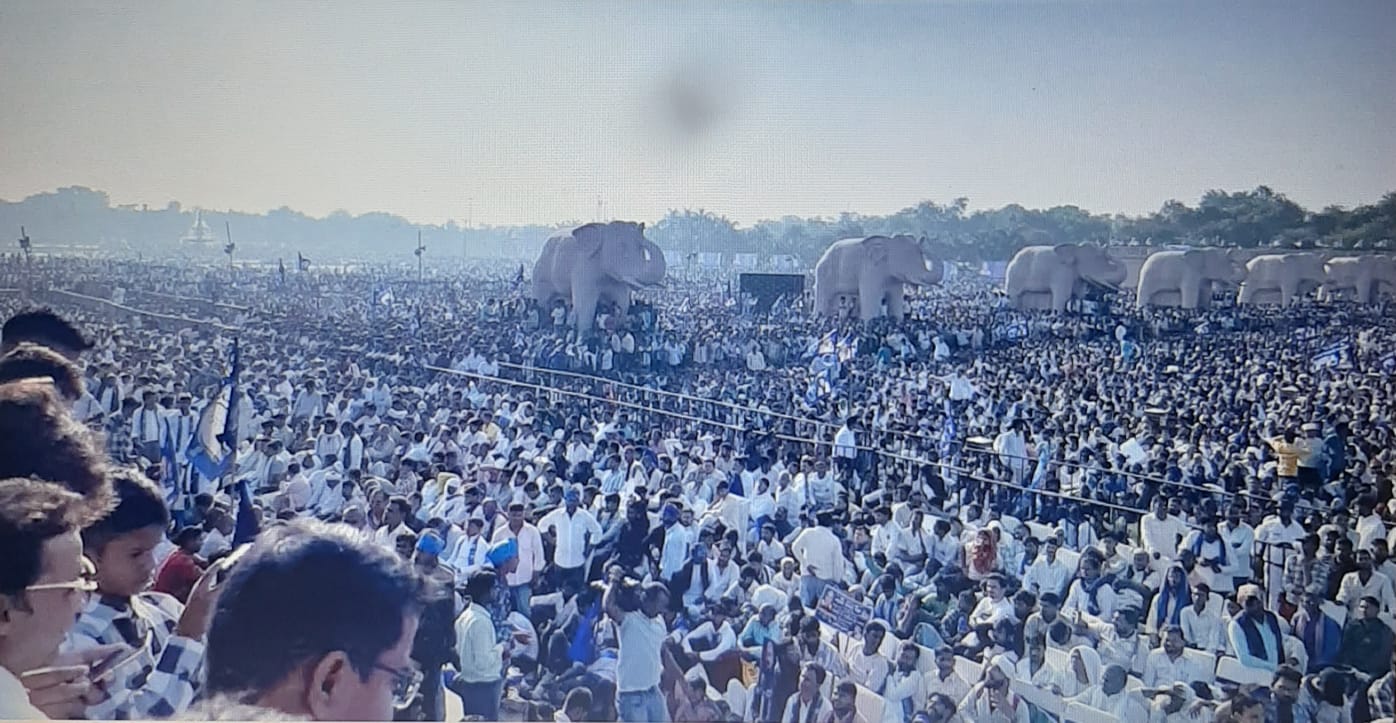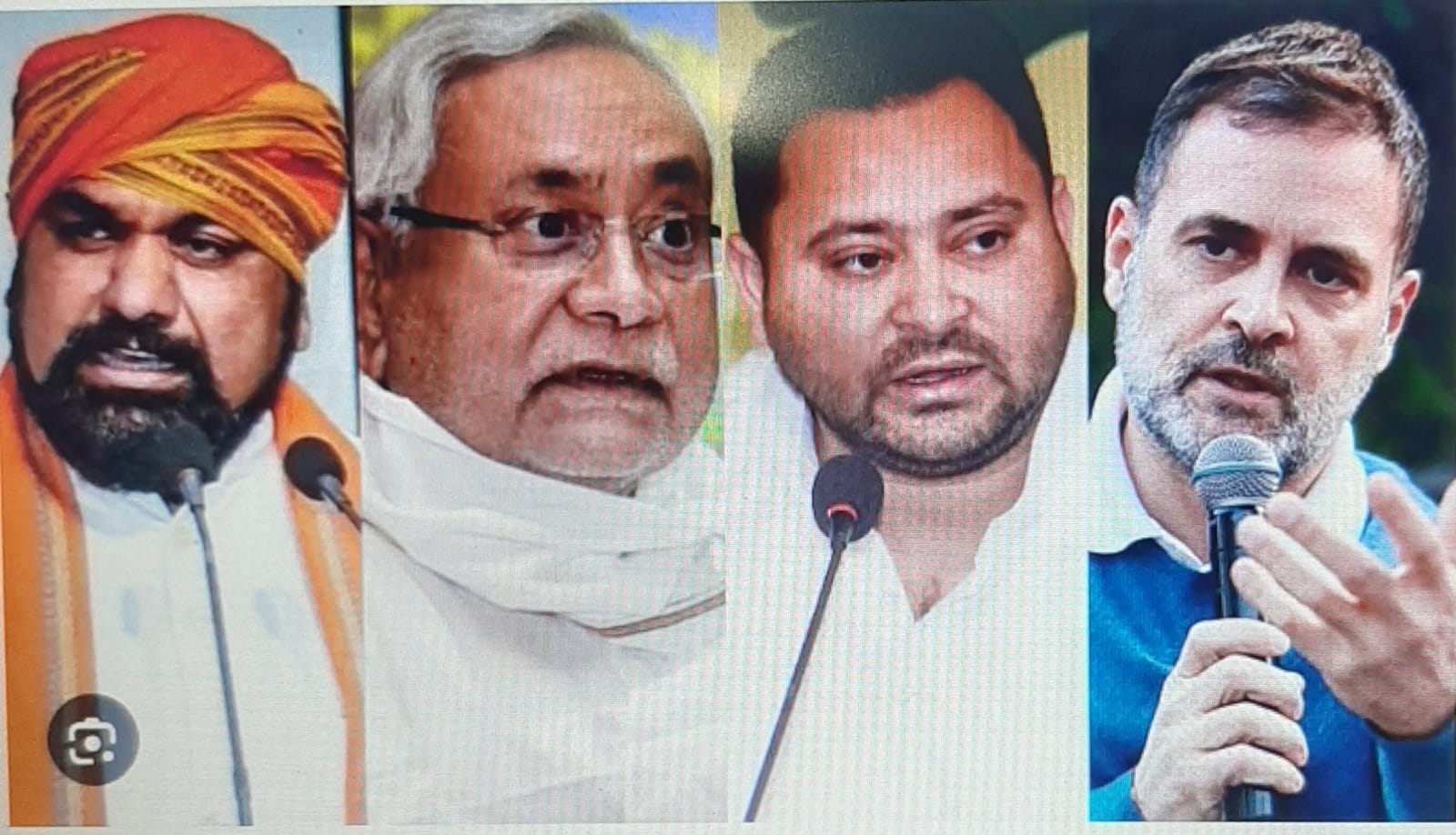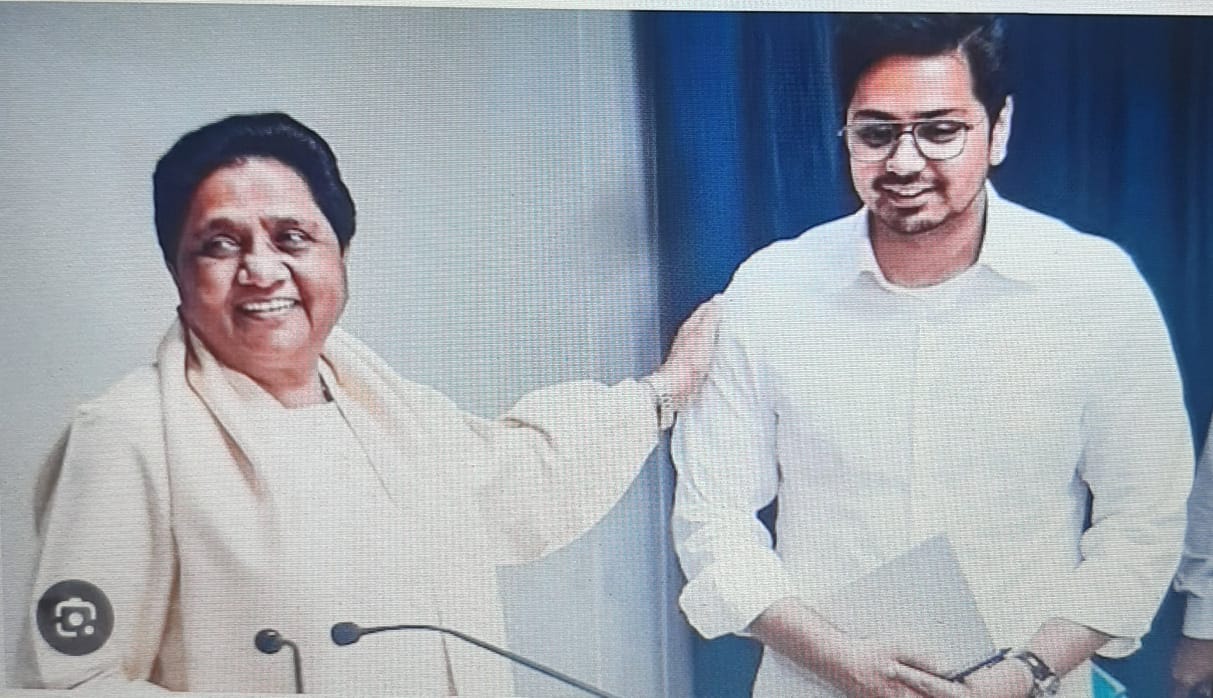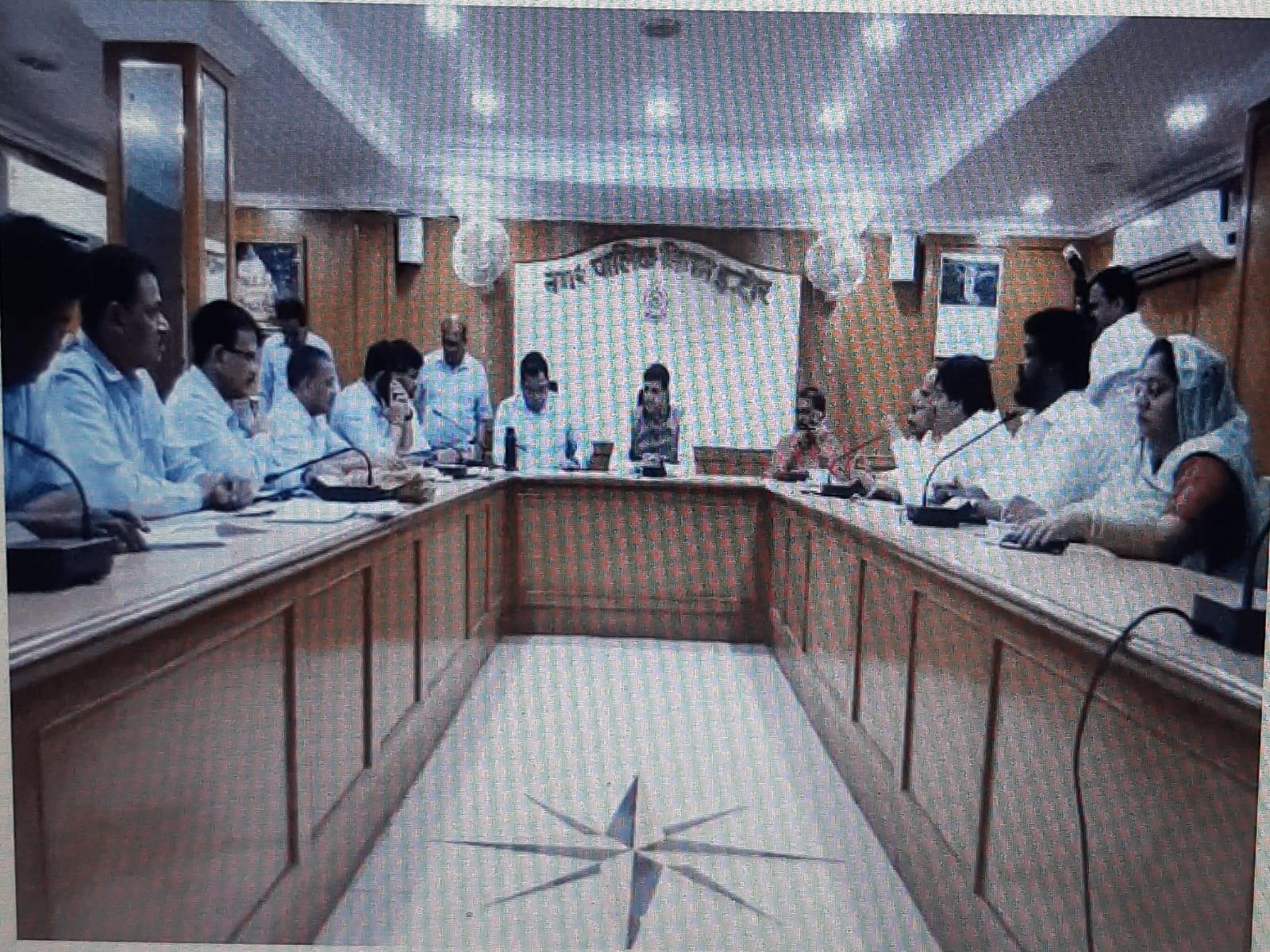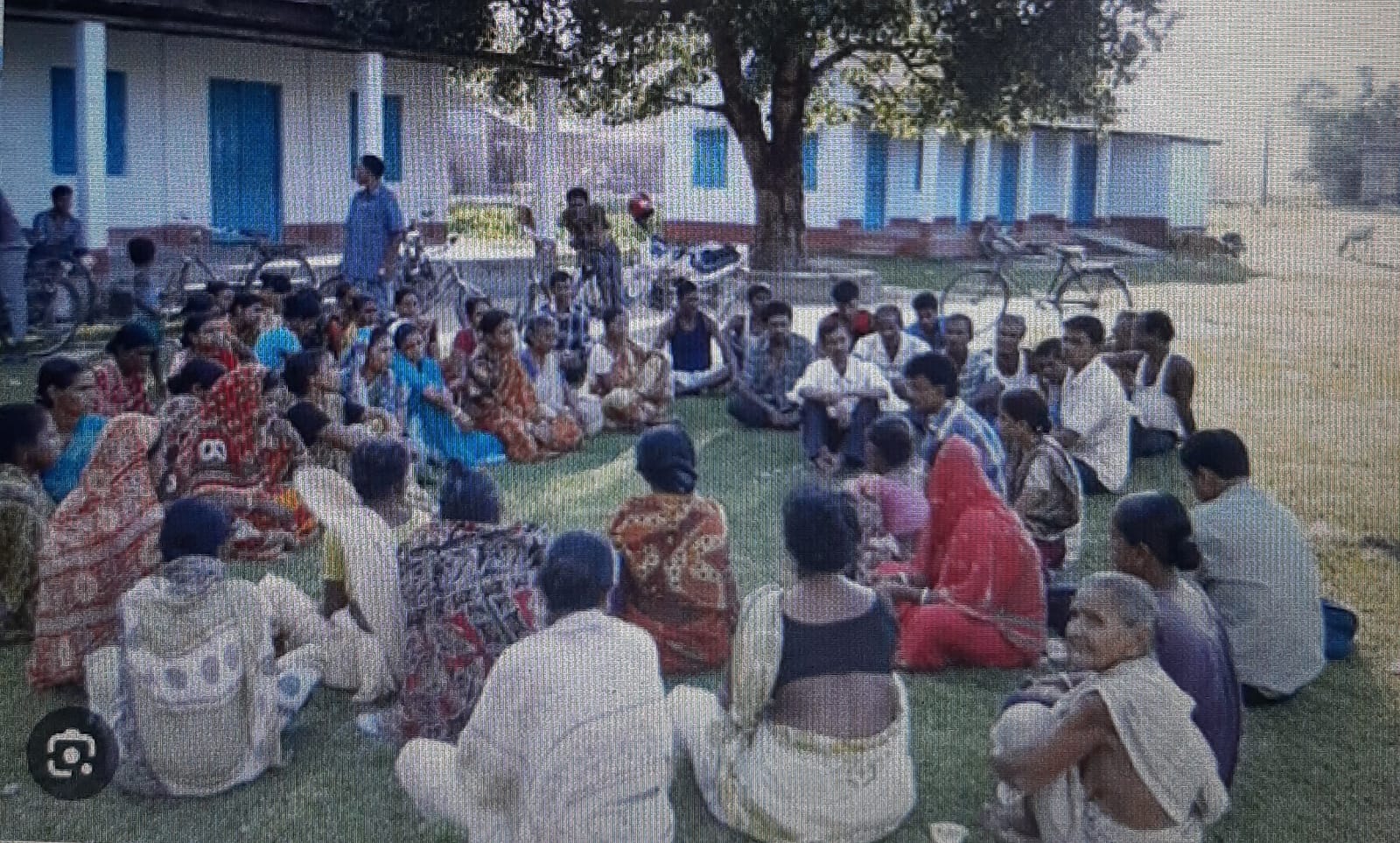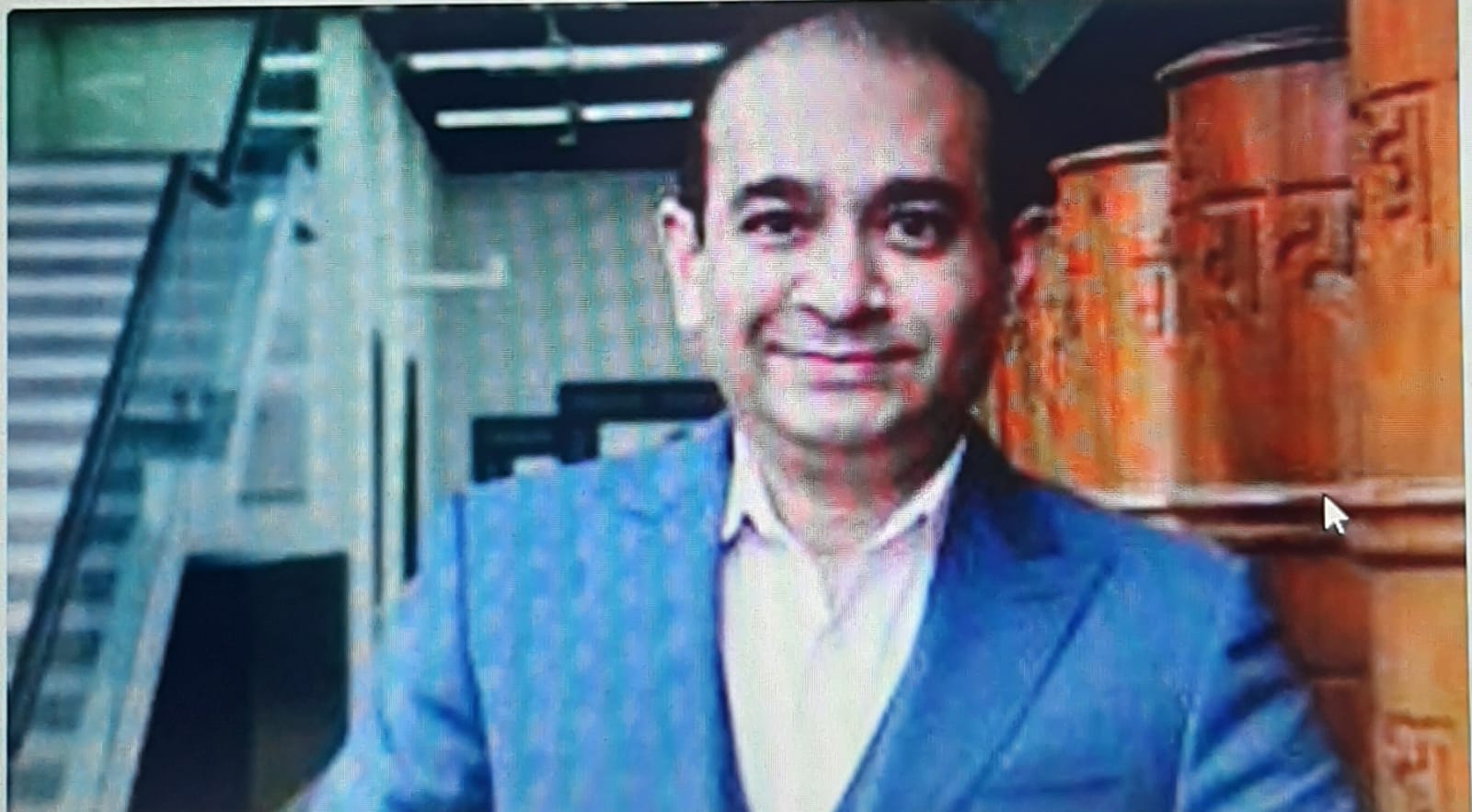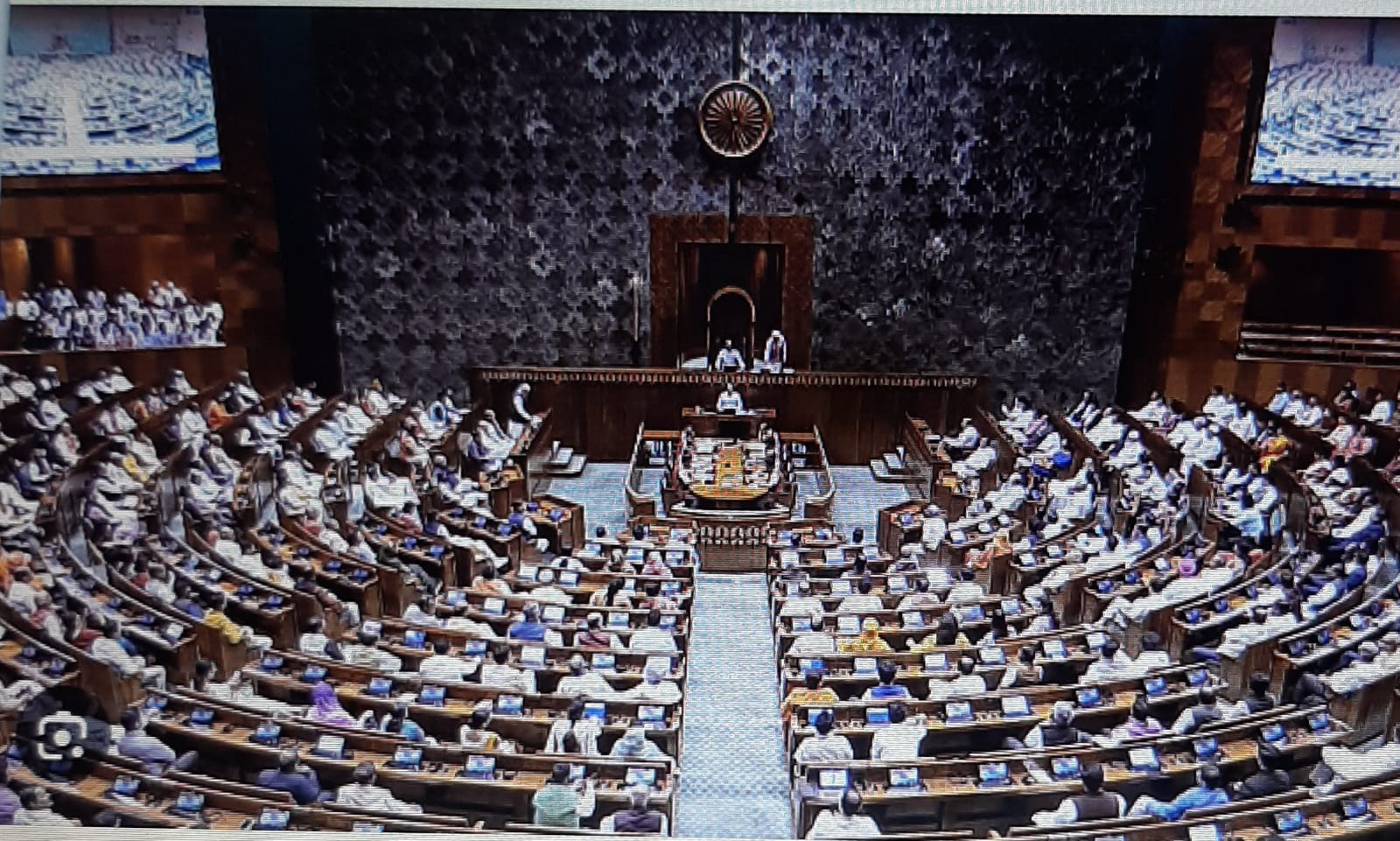
If we look at the number of women candidates who contested the general elections in 2024, then the situation appears more grim. Only 797 women candidates contested the Lok Sabha elections in 2024 and this was a measly 9.5 percent of total contestants. However, historically the number of women contestants has been increasing very slowly – from 2.9% in 1957 to 7% in 2009, 8% in 2014 and 9% in 2019, writes former IAS officer Sunil Kumar
It is over a year since the Parliament in a special session passed the 128th Constitution Amendment Bill (labeled Nari Shakti Vandan Adhiniyam by Prime Minister Mr Narendra Modi) which was notified as 106th Constitution Amendment Act (CAA) on 28th September 2023. The Act inserts Article 239AA, 330A, 332A and 334A in the constitution and provides for 33 percent reservation for women in the legislature of NCT of Delhi, Lok Sabha and Vidhan Sabha of all States. One-third reservation is to be provided for SC/ST category as well. Women’s reservation would remain in force for 15 years from the date on which it comes into force which would be after completion of Census and delimitation exercise thereafter. An important provision relates to rotation of seats reserved for women. This would happen during the delimitation exercise. The Constitution Amendment Bill was supported by all political parties – a far cry from the vitriolic and rancour filled proceedings in the Rajya Sabha when the then UPA Government had introduced the Bill in 2008 and passed it in 2010! However, it could not be introduced in the Lok Sabha. All earlier efforts in this direction beginning 1996 had met with failure in the absence of political consensus.
106th CAA has been celebrated as a major milestone in efforts to empower women in the country. Ruling party members took pains to highlight the efforts of ‘Modi Sarkar’ to launch and effectively implement schemes like Ujjwala Yojana, Swacch Bharat Grameen, Jal Jeevan Mission etc. aimed at easing the drudgery of women’s lives and asserted that through this ‘historic’ CAA, a giant stride has been taken towards women empowerment. The near unanimity with which the Bill was passed in both Houses of Parliament reflected that MPs of all political parties were loath to voice their ‘misgivings’ regarding losing power to feminists, upper caste women (’par kati mahila’ – a sexist term used by late MP Shri Sharad Yadav in 2010 or insistence on not letting the bill to be introduced till it provided for reservations for OBC women too) for fear of losing women votes in elections.
In this paper, one will look at the trend in election of women MPs and given the near certainty that the delayed Census operations would commence in 2025 and be completed by 2026 and the delimitation exercise by 2027 before the ‘all important’ Uttar Pradesh elections and chances of women reservation promised in 106th CAA coming into force by early 2027, how political parties would find suitable women candidates and what is the likely scenario that would unfold. Implications of such trend for strengthening democracy would also be analysed.
Women representation in Lok Sabha & Vidhan Sabha:
The issue of women representation in Parliament and State Legislatures had cropped up during the debate in the Constituent Assembly. Even the fifteen women representatives in the Constituent Assembly were not in favour of reservations[i] despite the Government of India Act, 1935, which formed the base for several provisions in the Indian Constitution, having provided for women reservation. They reportedly overcame their misgvings regarding falling representation of women in the Provisional Parliament as outgoing women members were being replaced by male members and did not press for reservation as they believed that the system would automatically ensure their representation. However, that was not to be.
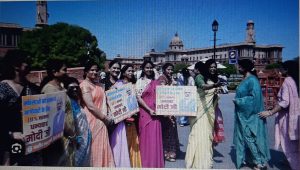
A review of representation of women in Lok Sabha from the first Lok Sabha (1952-57) to the present Eighteenth Lok Sabha reveals that number of women members has ranged between low of 3.9% (21 women MPs) in Sixth Lok Sabha (1977-79) to high of 14.3% (78 women MPs) in Seventeenth Lok Sabha (2019-24)[ii]. In the 18th Lok Sabha (2024-29), the number of women MPs has decreased to 13.6% (74 women MPs) instead of increasing as this general election took place in the aftermath of the notification of the 106th CAA.
The PRS study referred above shows that the highest representation of women in Legislative Assembly is in Chhatisgarh and the lowest 0% in Mizoram. The average representation of women in Legislative Assemblies stood at 9% in 2023. Recent Assembly elections held in Haryana, Jammu & Kashmir, Maharashtra and Jharkhand reveal that there has not been much improvement in status of women representation in these Vidhan Sabhas. In Maharashtra, the number of women MLAs has declined from 24 in 2019 to 22 in 2024 which is less than 8% of total MLAs in Maharashtra. The number of women MLAs has registered slight increase in the remaining two States and UT of J&K – from 10 to 12 (14.81%) in Jharkhand, from 9 to 13 (14.44%) in Haryana and from 2 to 3 in J&K.
If we look at the number of women candidates who contested the general elections in 2024, then the situation appears more grim. Only 797 women candidates contested the Lok Sabha elections in 2024 and this was a measly 9.5 percent of total contestants. However, historically the number of women contestants has been increasing very slowly – from 2.9% in 1957 to 7% in 2009, 8% in 2014 and 9% in 2019. An analysis of the data of tickets provided to women contestants by two major national political parties reveals that BJP provided tickets to just 69 (15.6%) and INC to 41 (12.5%) women candidates. Regional parties fared comparatively better – BJD & JMM provided tickets to roughly 33% women candidates; RJD to 29%, AITC to 25%, SP to 20% and NCP to 40%.
It emerges that despite the passage of the historic Women Reservation Bill by Parliament in September 2023, the two major national parties – the BJP and INC have given tickets to less than 16 percent of candidates fielded by them in the 2024 General Elections. It is only the smaller regional parties like Biju Janata Dal (BJD) in Odisha, Jharkhand Mukti Morcha (JMM) in Jharkhand, NCP in Maharashtra, the Naam Tamilar Katchi in Tamil Nadu and LJP (Ram Vilas) who fielded 33 percent or more women contestants in the General Elections[iii].
Winnability of Women Candidates:
Why has this been so? What explains the hesitancy of political parties to field more women contestants in the electoral arena knowing full well that by 2029 (if not earlier) they may be required by law to field more women candidates? One common response is that given the high stakes involved, political parties are reluctant to overlook the ‘winnability’ factor. But data shows otherwise. A PRS study based on 2019 election data shows that there is no difference in the ‘winnability’ of women candidates. TMC had fielded 37% women candidates and among the winners, 41% were women. Likewise for BJD, the corresponding figures were 33% and 42%; for YSRCP 16% and 18% and for BJP 13% and 14% respectively. The percentage of women winners compared to women candidates fielded by INC was 12% and 13% and for DMK 8% each. So it is not the case that women candidates lack ‘winnability’ quotient!
Financial Resources of Women Candidates:
If winnability is not an issue, then is it that they could possibly lag behind in terms of ‘financial resources’ that they can deploy in the elections? This too can be ruled out especially as over 90 percent of candidates given tickets by major political parties were crorepatis and 93 percent winners (504) of 2024 Lok Sabha elections were crorepatis. ECI data reveals that the proportion of ‘crorepatis’ winning Lok Sabha elections has increased from 58 percent in 2009 to 82 percent in 2014, 88 percent in 2019 and 93 percent in 2024. This is a phenomenal increase. In fact 95 per cent of the 240 winning candidates of the Bharatiya Janata Party (BJP) and 93 per cent out of 99 winning candidates of Congress were crorepatis. In case of several smaller parties all the candidates who won the elections were crorepatis. These were Telugu Desam Party, Janata Dal (United), Shiv Sena (UBT), Shiv Sena, Lok Janshakti Party (Ram Vilas), Rashtriya Janata Dal, Aam Aadmi Party, Indian Union Muslim League and Nationalist Congress Party. As many as 95 per cent out of 22 winning candidates from Dravida Munnetra Kazhagam, 93 per cent out of 29 winning candidates fielded by All India Trinamool Congress, 92 per cent out of 37 winning candidates fielded by Samajwadi party were also crorepatis.
If one examines the assets of women MPs then it emerges that 66 out of 74 women MPs (89%) in 18th Lok Sabha, are crorepatis. If we look at ‘crorepati’ women candidates, then it emerges that 249 out of 797 women candidates were crorepatis which is roughly around 31%. Given the fact that the total number of crorepati candidates was also 31% (2575), there is no major difference in financial resources that can be deployed by women candidates either. However, even among these crorepati candidates, the highest 42 per cent (227) had assets worth over Rs 10 crore or above. They were followed by 32 per cent (174) candidates with assets between Rs 1 crore and Rs 5 crore, and 19 per cent (103) between Rs 5 and 10 crore. The analysis done by ADR showed that crorepati candidates had 19.6 percent chance of winning compared to just 0.7 percent for those candidates who had assets worth less than Rs. 1 crore.
This analysis shows that despite the passage of the Women Reservation Bill, which promises 33% reservation for women, political parties did not give significantly more tickets to women candidates. Given that over 90 percent tickets given by political parties are to crorepati candidates and the chances of their winning is almost twenty times more than non-crorepati candidates, this trend is not going to significantly change even in future elections.
As indicated earlier, Census operations are likely to commence in 2025 and completed by 2026. Delimitation Commission is likely to be constituted in 2026 and based on its exercise, it is likely that elections to State Assemblies in 2027 may see number of constituencies being reserved for women as per the 106th CAA. Even if there is no increase in the number of Lok Sabha seats after delimitation, the number of seats reserved for women would be 182 which is almost 2.5 times the present number of women MPs in Lok Sabha. Following reservations for women, the number of women candidates would need to increase around four times the number of women contestants in 2024 Lok Sabha elections. So the challenge for all political parties especially the bigger national parties like BJP and INC and the major regional parties would be to find adequate number of suitable women candidates for both Lok Sabha and Vidhan Sabha.
Options before Political Parties:
In all Lok Sabha elections, a few sitting MLAs and several persons who have unsuccessfully contested Vidhan Sabha elections in the past, are given tickets by political parties to contest Lok Sabha elections. But their number normally does not exceed ten percent at best. So there would still be a huge shortfall. Another option could be to give more tickets to women who have contested elections to District Panchayats and Block Panchayats especially for the post of district Panchayat Chairperson or Block Pramukh as these are more likely to be connected to strong local ‘political families’ who wield both influence and command financial resources. However, at present, it is only in some States like Kerala where there is some precedence of first letting political workers ‘cut their teeth’ in local government elections before being considered for contesting Vidhan Sabha or Lok Sabha elections. Ideally, local governments, where one-third seats have been reserved for women for nearly three decades now (in 21 States 50% seats are reserved for women), should serve as the launching pad for budding MLAs and MPs. But that does not seem to be the case as of now.
If the gender composition of party cadre of different political parties is examined, it would emerge that the number of women members would not exceed ten percent. This is evident from the representation of women in party forums at all levels such as Parliamentary Board, Central and State Working Committees or even office bearers. For instance, as of now, there are just two women in the 14 member Central Election Committee of BJP. In case of INC, there are just six women members in the 37 member Congress Working Committee. Similarly even in the booths set up by political parties outside polling booths on day of election to help the voters find their name on the electoral roll, women party workers are hardly to be seen. Women are hardly nominated as Polling Agents or even Counting Agents by candidates of different political parties. So, at present, it is token representation of women in all important party forums of almost all political parties, big or small.
However, there is nothing in public domain to suggest that political parties have started grooming women leaders at all levels from Gram Panchayat to District, State and National levels. It appears they have adopted a ‘wait and watch’ attitude. They will first wait for delimitation exercise to be completed for State Assemblies and Lok Sabha before finalizing their strategy. And it is not difficult to see what their strategy would be.
Dependence on Political Families:
Despite public berating of ‘dynasty politics’ especially of Congress, Samajwadi Party, Rashtriya Janata Dal, NCP, National Conference, PDP, Shiv Sena by leaders of BJP, analysis of distribution of tickets for Lok Sabha and Vidhan Sabhas reveal that almost all political parties are highly dependent on ‘political families’ – where politics runs in the family. Sons and grandsons succeeding their fathers and grandfathers is a common feature of Indian politics today. This has been described as ‘hereditary MPs’ by late historian Patrick French.
The way number of crorepati candidates has almost doubled from 16% in 2009 to 31% in 2024 and the average assets of candidates have increased by 463 per cent in the same period rising from Rs.1.1 crore in 2009 to Rs. 6.23 crore in 2024 tells it’s own tale. Elections are fast becoming the arena of the ‘rich and powerful’ and beyond the means of ordinary citizens. In this scenario, rich and powerful political families in virtually all districts are the ones to which all political parties turn to. And they can change their political colours at the drop of a hat!
Smugness of Political Parties:
It appears that once delimitation exercise is completed and seats ‘reserved’ for women notified, most political parties would hand over ticket to women dependents of their local sitting MP/MLA ; ex- MP/MLA or those who have contested earlier on their party ticket. This would be ‘killing all birds with one stone’ – not just two! This is a typical Indian trait and also explains the smugness of all political parties. Till such time as women reservation comes into effect, political parties would rather look upon women as a class of ‘beneficiaries’ to be targted through Laadli Behna Scheme as in Madhya Pradesh or Ladki Behna Scheme as in Maharashtra where women are recepients of direct cash transfer or Free Bus Transport scheme as in Karnataka. They don’t feel the need to practice ‘gender inclusive politics’ even at this stage. State and National leaders of political parties tend to turn a blind eye to the issue of ‘proxy leadership’ which is especially seen in vast tracts of north, central, east and west India in the context of elected women representatives in rural and urban local governments. They would not mind if it extends to state and national politics too albeit in a more sophisticated manner. Independent, confident, articulate women leaders send a chill down the spine of most males.
Grooming Women Leaders:
Given the fact that there are over 8 million Self-Help Groups having over 8 crore women members, it would stand to reason if large majority of 14.6 lakh women elected representatives in rural and urban local governments had come from SHG background. But that is not the case despite SHG movement also completing 25 years in India. Likewise, rural and urban local governments ought to have been the training ground for potential MLAs and MPs and political parties should have ‘spotted’ and ‘groomed’ these women leaders. Unfortunately, the political class has shown exemplary hypocrisy by providing for elections to local governments on ‘non-party lines’ in most States even as they rush to claim their active support at the time of Vidhan Sabha and Lok Sabha elections. By refusing to recognize politics at local village/Panchayat level, a singular dis-service has been done to strengthening grassroots democracy. Social and economic inequality exists at all levels and good governance implies that individual and social prejudices do not materially impact the rights of individuals as citizens and voters. The patronising attitude of male elected members, government officials and refusal to take women leaders seriously as reflected in the phenomenon of ‘Pradhan Patis’ throws a spanner in the works of even most dedicated and earnest women leaders in local governments.
The way in which women leaders face targted attack on their ‘character’ in and outside party forum, from foes and friends alike and with non-existent institutional arrangement based on Visakha Guidelines in their own political parties, most ordinary women (with no political Godfathers) face family pressure to withdraw from public life. So political parties would need to change and put in place strong institutional structures in place to provide a sense of security to their women members, especially those who are ‘ordinary’ workers and do not belong to any political family. Women candidates, especially those belonging to weaker sections, may also require greater financial support from the ‘party’ for contesting elections.
Time to re-imagine Local Government:
If political parties begin to look at Local Government as the nursery for grooming leaders steeped in democratic values, knowledgeable about democratic practices and adept at using tools of parliamentary democracy for fostering efficiency, transparency and accountability, then democracy would become meaningful for citizens. Or else what we are moving towards is a new form of ‘zamindari’ system wherein these 1500 odd political families would control and wield the levers of power. These would be the ‘new age’ democratic ruling elite who go through the motions of seeking popular support once in five years and once voted to power forget that they have merely been authorized to govern for a limited period and not received the license to rule.
If parliamentary democracy is seen as mastering the art of negotiation between competing interests of different social groups and arriving at mutually acceptable decisions, then presence of larger number of women leaders in the Legislative Assemblies and Parliament would definitely have a positive impact. But that would depend on the political culture that evolves in the country where women are not only allowed to articulate their views but are also heard seriously. A re-run of ‘proxy leadership’ by the male patriarchs of the political families who currently control politics would cost the country dearly in terms of opportunity lost. Good governance, focus on health and education, physical and mental well-being of citizens are areas where women leaders at all levels across the world have made a difference. India need be no exception. The opportunity is there. It is for us to seize the opportunity and collectively make a difference.
(Sunil Kumar is a Visiting Faculty in Gokhale Institute of Politics & Economics, Pune and a former Civil Servant. Views expressed are personal.)
References:
[i] The Women’s Reservation Bill has a long history of arguments and stakes – Krithiha V. and Sushovan Patnaik | 25th Sep 2023 – Supreme Court Observer; https://www.scobserver.in/journal/the-womens-reservation-bill-has-a-long-history-of-arguments-and-stakes/
[ii] Vital Stats – Women in Parliament and State Legislative Assemblies – September 19, 2023, PRS Legislative Research
[iii] What 2024 Lok Sabha Elections tell about women representation in Indian Politics, Sonali Varma, updated on 12 August, 2024; https://timesofindia.indiatimes.com/india/2024-lok-sabha-elections-womens-representation-in-indian-politics/articleshow/111100900.cms


